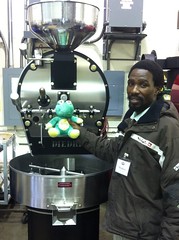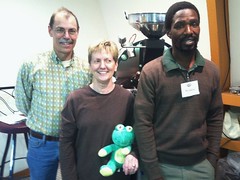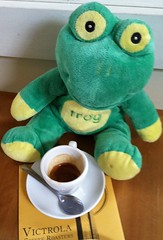Welcome to the first edition of the Quaffee’ s newsletter. We will strive to only send these newsletters when there is actual news. This means that we anticipate that there will be typically four newsletters a year.
A lot has been going on at Quaffee, but probably the most exciting news has been that Mzukisi, our well-loved driver, is now a certified trained roaster. We took a trip to the Northern part of the USA to go and see our new hand built roasters, and to do some training on the roasters. We have two Diedrich roasters that are on their way to us, and so we though being trained by the master and designer of the Diedrich roasters was a must if we are to maintain if not better our quality in the years to come, more about the trip and the roasters later.
We also have our own direct sourced Colombian’s arrive at the beginning of the year, one of them the Los Naranjos has already received a lot of acclaim. And some of our most popular coffees are back. We have a number of new blends. Blends are our way of introducing the high quality coffees we source to everyone. Also we have learnt that single region, origin or estate coffees are to some people’s tastes, while blends seem to work for others.
We hope you enjoy our newsletters, which we hope to keep short and to the point. If you are looking for day-to-day news remember to like us on facebookor follow us on twitter.
Post a picture of you enjoying a cup of Quaffee on our Facebook wall, and you could win a gift voucher from Quaffee to the value of R500.00, which you can spend online.
Regards,
The Quaffee Team
Diedrich Roasters Why?

Today almost all the modern roasters are moving away from direct heat, and using the infra-red clean heat. Since this is firstly more efficient and secondly keep the heated air pollutant free. The Diedrich roasters, were the first roasters to concentrate on making things to aeronautical engineering standards. From the barrel to the chassis everything is made precisely and to and exacting standard. The end goal of the roaster is to produce a clean control roast that imparts the best to the bean, showing respect to the growers that spend most of their year growing the coffees, we roast.So we choose Diedrich roasters since they are a pure exhaust fume free roaster, with a controllable air flow, and rugged barrel engineering.
Want to see what coffees we have in stock then click coffees in stock, you can sort by price, category and country.



